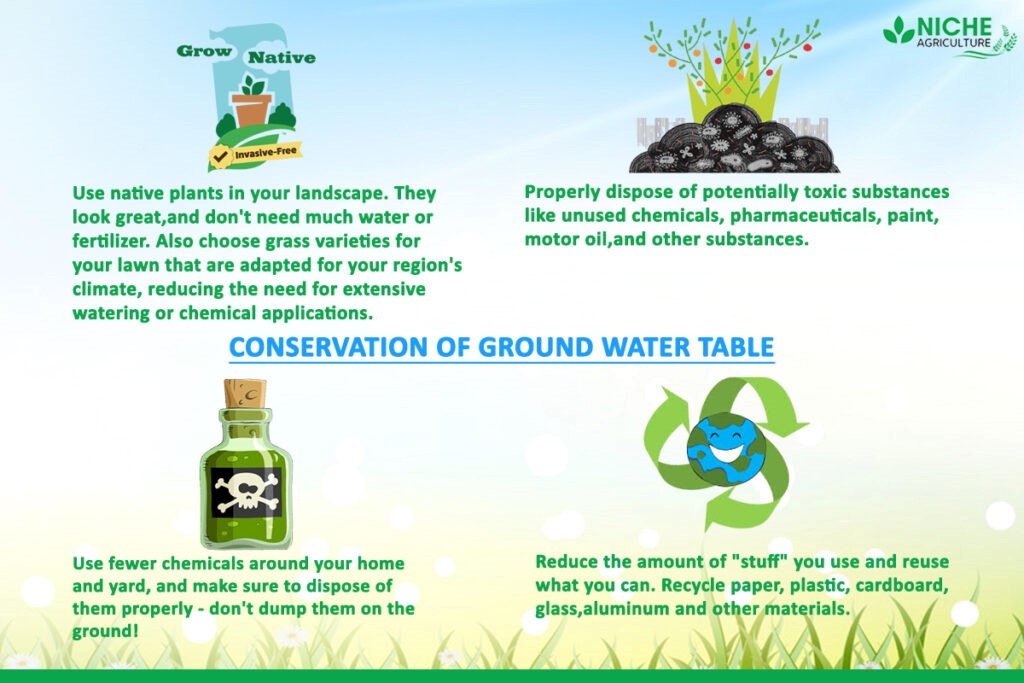[ad_1]

Context:
The theme of this year’s World Water Day (March 22) was ‘Groundwater: Making the Invisible Visible’.
The primary focus is to draw attention to the role of groundwater in water and sanitation systems, agriculture, industry, ecosystems, and climate change adaptation.
Groundwater helps reduce the risk of temporary water shortage and caters to the needs of arid and semiarid regions, but its value has not been fully recognised in policymaking.
While dependence on groundwater is increasing everywhere, there are serious issues of depletion of stored groundwater and deterioration of quality. High temperatures and drought threaten water security.
Due to its high storage capacity, groundwater is more resilient to the effects of climate change than surface water.
The international conference on ‘Groundwater, Key to the Sustainable Development Goals’ (May 2022) and the UN-Water Summit on Groundwater (December 2022) are part of global initiatives to highlight the significance of groundwater in sustainable development.
With an annual groundwater extraction of 248.69 billion cubic meters (2017), India is among the largest users of groundwater in the world.
Almost 89% of the groundwater extracted is used for irrigation and the rest for domestic and industrial use (9% and 2%).
High level of extraction values:
- India has 16% of the world’s population, but only 4% of its freshwater resources.
- Given the existing consumption patterns, including rampant groundwater extraction, estimates suggest that by 2030, India will only have half of the water it needs.
- As the climate crisis escalates, its impacts are causing significant changes in the flow of rivers, and in some cases, a shift in their course.
- There are, therefore, credible concerns about the access and availability of water to meet future water demands of cities.
- According to the Central Ground Water Board, the annual groundwater withdrawal is considered to be safe when the extraction rate is limited to below 70% of the annual replenishable recharge.
- Available data indicate that the level of extraction for the country in 2017 was 63%, from 58% in 2004. However, the level varied across regions.
- Punjab, Rajasthan, Haryana, Delhi, Chandigarh, Himachal Pradesh, Tamil Nadu, and Puducherry have crossed the 70% mark.
- Of 534 districts in 22 States/UTs, 202 districts had stage of extraction ranging from 71% to 385%.
- NITI Aayog has set the 70% extraction value as the target to be achieved by 2030.
- Besides the high level of extraction, quality is also an issue of concern. A quantity-wise safe district may be vulnerable due to deterioration of water quality.
- Fluoride, iron, salinity, nitrate, and arsenic contamination are major problems. As many as 335 districts reported nitrate pollution compared to 109 in 2006.
- A high level of nitrate affects human health. Source of nitrates are mainly anthropogenic and depend on local actions.
- Biological contamination has also been reported from different parts of the country.
Changing approach: creation of National Water Framework:
- The existing approach of dealing with surface water and groundwater independently has severe limitations.
- As the Mihir Shah Committee (2016) proposed, the Central Water Commission and the Central Ground Water Board could be united and a national water framework with an integrated perspective developed.
- There is also a need to work out local-level plans covering water resources in all its forms: rainwater, surface water, soil water and groundwater and the resource use sectors.
- Groundwater, surface water and the intervening landscape form part of a matrix, and together with the vegetation system they constitute the Critical Zone, where most terrestrial life resides.
- Re-establishing connections between surface and groundwater systems, both for governance and management, entails a local area approach that will involve revisiting the present groundwater estimations process, large-scale aquifer mapping, linking aquifers with river basin/watershed boundaries, hydrogeomorphology analysis, and factoring land uses and human-induced changes in the water system.
- Linking cropping patterns and crop intensity with groundwater availability, aquifer type, and the present state of groundwater extraction at the farm level is
- At present, there is an energy subsidy for groundwater extraction with little regulation.
- This encourages farmers to withdraw water at their will. There is a larger issue of ownership of community resources in this context.
- Although groundwater recharging takes place through a geohydrological process and is not confined to administrative or property boundaries, a landowner has the exclusive right to groundwater available in their property.
Recent Initiatives:
Master Plan for Artificial Recharge to Groundwater – 2020:
CGWB in consultation with the state governments has prepared The Master Plan – 2020 which envisages construction of about 1.42 crore Rain water harvesting and artificial recharge structures in the Country to harness 185 BCM.
Atal Bhujal Yojana:
Atal Bhujal Yojana (ABHY), co-funded by World Bank funding, was launched for sustainable management of ground water with community participation in the identified over-exploited and water stressed areas.
In addition, the government has also launched the ‘Catch the Rain’ campaign to promote rainwater harvesting.
Conclusion:
A community resource thus turns into a private resource due to the location of extraction site.
Re-articulation of the legal framework for groundwater use gains relevance in this context.
The new paradigm for groundwater management is a socio-ecological challenge, where localism matters.
It warrants technical, economic, legal and governance remediation with space for active public participation and community regulatory options to maintain groundwater balance at the village/ watershed level.
[ad_2]

